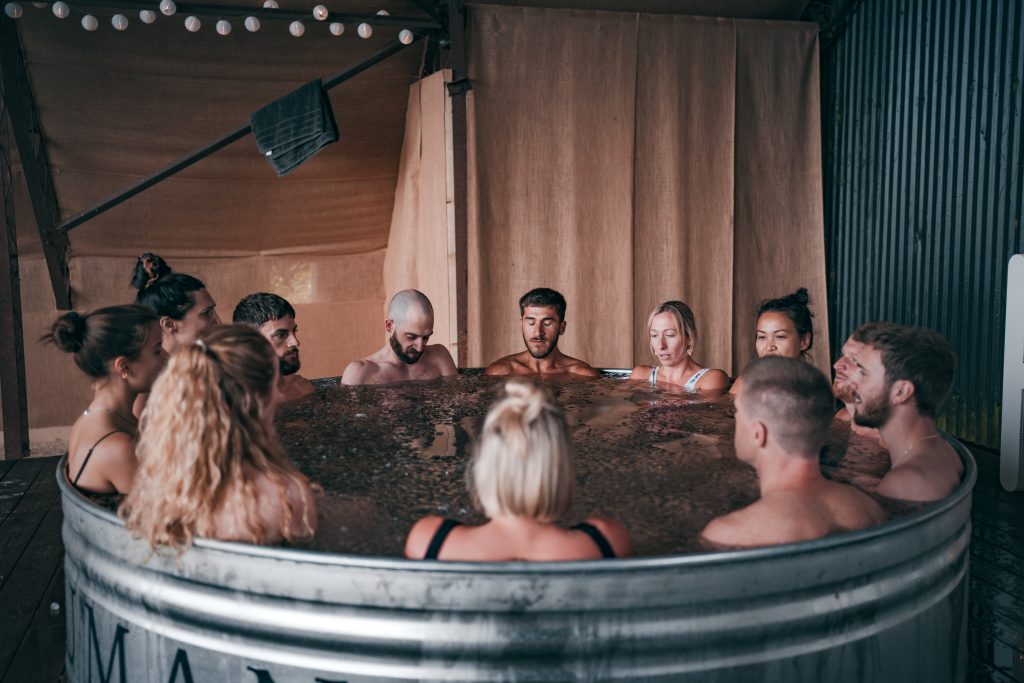

“Purposeful action is thus the goal of all that is truly educative.” John Dewey
It’s great to meet you. My name is Ollie, and I’m the co-founder of the Human programme alongside my partner Elliot.
The human programme was a small seed that was planted between two friends out of curiosity and a deep desire to help others reach their full potential.
The seed was planted as the pandemic hit and the world was at a standstill. The purpose was to connect like-minded individuals and foster social connections.
We began as an online education three years ago, with the aim to help support health practitioners in the industry learn more about holistic health, from the inception of our idea, we envisioned an outdoor space in nature where we could eventually bring the human programme to life.
We took inspiration from many different eastern cultures when we created the identity of The Human Programme. The Ikigai philosophy is one we both greatly appreciate, followers of the practice believe that Ikigai is the root of happiness and longevity.
Okinawa Island in Japan is known for having the longest life expectancy in the world. These special spots in the world are part of the “Blue zone” a blue zone is where people live the longest and are healthiest. These areas of the world have the highest concentration of centenarians.
The Ikigai way of life is pretty straightforward. It’s a lifestyle based around daily physical activity, building healthy relationships with friends and family, eating a highly nutritious diet, and living a purpose driven life.
The Human Programme embraces the holistic approach of eastern cultures and focuses on education and empowerment, with health, happiness, and community at its core.
Our current focus is to increase adult health and well-being, but our long term focus is to equip the next generation with the necessary tools and life skills to thrive in the modern-day world.
In recent years, Elliot and I have both experienced profound health impacts that have led us to seeking out a more holistic approach to life. Elliot’s journey began at a young age when engaging in various sports and martial arts practices. As a result, Elliot sustained several lower limb injuries that led to three hip operations by the time he was 24.
As a professional athlete, I experienced both acute and chronic stress on a physical and mental level, and at that time I did not have the tools to find a sense of balance.
After competitive sports, I found myself retraining as a sports therapist and movement practitioner. During my training it was evident to me that chronic inflammation plays a very significant and prominent role in the modern-day human condition. This is a perfectly natural response to the demands and high expectations of modern-day life.
It is often the case that humans cannot reach their fullest potential because they are stuck in survival mode.
In today’s fast-paced world, we have a multitude of life stressors to handle every day. An escape to the wilderness could be the best solution to remove these stressors and live off-grid, but this choice carries the danger of isolating yourself from our communities and families.
The challenges each of us face present opportunities to find new, innovative solutions to old problems. The first step towards this is cultivating good healthy habits to maintain and keep improving our mental, physical, and social functioning.
The great news is that the many benefits of mindfulness-based practices are now backed by science and informed research.
The practice of mindfulness has been shown to help individuals develop social skills such as empathy and effective communication. In addition, it helps individuals respond appropriately when faced with the challenges that life poses, both personally and professionally.
To live happily and healthily in a world that is rapidly changing means we must be able to not only adapt to our environment but thrive in it also.
Humans of the 21st century

The growth in mindfulness, meditation, and minimal living is a visible response to an overstimulated culture, a yin to the frantic yang of 21st-century life.
The human brain hasn’t really evolved that much over the last 50,000 years and so we still have the survival instincts designed to protect us from prehistoric dangers such as lions and tigers.
The 21st-century lion is now the flooding number of unread emails and the juggling of social and work commitments. With time now being perceived as something of a commodity, we can deal with these micro stressors until a point before the little things become big things.
To survive throughout our evolution, we developed a mechanism within our brains that would spot potential dangers and react to them immediately. It served us well back then, as the faster we reacted to the threat, the better our chance of survival.
This carefully designed system is known as the stress response. Humans were designed and set up for survival, happiness and joy were not always our first priorities on the savannah as we hunted for prey and kept our loved ones alive.
The stress response can be triggered by physical, emotional, nutritional, or environmental factors. In response to a specific stressor, the body undergoes physiological and behavioral changes.
If the stress response is not balanced between rest and relaxation, it turns from a helpful response to a harmful one. Every single organ in our body is affected by stress, stress is psychosomatic – it affects everything from our digestion to our skin.
It is therefore essential to be able to manipulate the nervous system from the sympathetic response (fight and flight) to the parasympathetic branch (rest and digest).
As a result, the physiological reactions created by the stress response will be reversed. The heart rate and blood pressure will decrease instantly. As a result, muscles will be relaxed, saliva will be produced, and digestive enzymes will be released.
The Gazelle
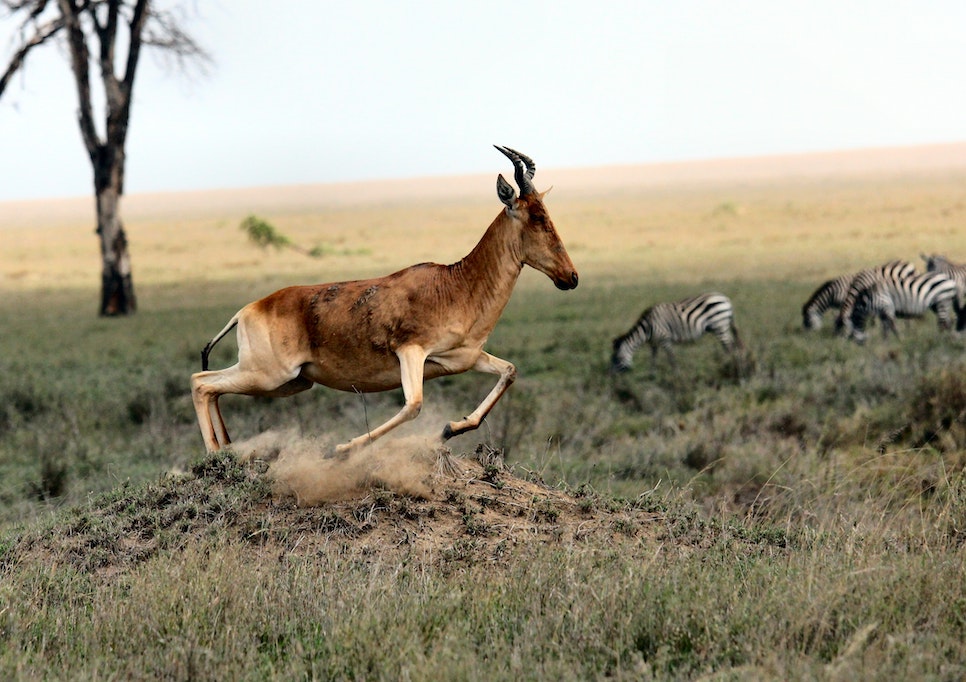
In contrast to humans, animals shake off stress immediately following an attack or threat, letting the animal process and clear the stressor before re-establishing homeostasis and equilibrium.
However, a human in the modern world experiences stress when specific demands (e.g., work, childcare, class assignments) exceed their capacity to control or manage them effectively.
Both short-term and chronic stress can be physically and psychologically debilitating without the proper tools to cope. Having experienced this firsthand it is clear to see how it can quickly affect our day-to-day lives.
So, back to our animal counterparts…. imagine a deer that’s running from its predator, in this scenario we will use a wolf. The deer’s body will be flooded with adrenaline and cortisol.
This deer is in the “flight” response, one of the four primary fear responses. If the deer is then caught by the wolf, it immediately goes limp. This is what we call the “freeze” response. After escaping the wolf, the deer shakes its body, releasing all the chemicals and energy it’s accumulated during both the freeze and flight responses.
As a result of this involuntary shaking, the deer may not suffer trauma or stress-related physical problems, and the cycle of mobilizing stress has been completed.
However, when it comes to humans, whether it’s a life-threatening situation, a minor accident, or an emotionally-testing event, certain stressors can influence a person’s response to life’s circumstances for years – that is, until they are released.
The ability to self-regulate and reach a point of balance, is also shared by humans. We just need to know how to access it.
The Human Code
During my time as a professional athlete, my priority became winning, and there was a constant desire for continual progression. It is not uncommon for the body and the mind to overexert itself when we are expected to perform to our best abilities in every walk of life.
To reach our fullest potential and offset the pressures of modern-day life, we can equip ourselves with a portable routine of evidence-based practices to find a sense of balance and composure at our will.
The human code is a set of holistic mindfulness practices that have been created in the pursuit of others becoming the true leaders of their own health. We have combined some of the most ancient practices to create the human code.
At the heart of the code is self-awareness which involves exercising our attention in a way that is open to observing any moment experience with equanimity and openness.
The human code practices include :

We believe the antidote lies in these holistic practices. Holistic health refers to a complete approach to health, including mental, physical, and spiritual well-being.
Eastern cultures have embraced mindfulness practices for thousands of years, and only in the past 40 years has the west begun to recognize their health and wellbeing benefits.
The human code practices promote self-regulation of attention and awareness to improve voluntary control of mental and physical processes, leading to a better quality of life.
Individually the practices are transformative to health, but when combined and practiced over time, these frameworks support many attitudes that contribute to living a fulfilled life.
At the heart of the human code, is positive healthy habits. We are the by-product of what we repeatedly do. Habit formation is bringing conscious awareness to new behaviours and patterns.
Habits are fundamentally learned. What we do habitually makes up a lot of what we do entirely.
It is estimated that 40% of waking behavior is made up of habitual behavior, derived from our daily habits and behavioral patterns (Journal of Personality and Social Psychology, Vol. 83, No. 6, 2002).
The Human code practices
Social connection
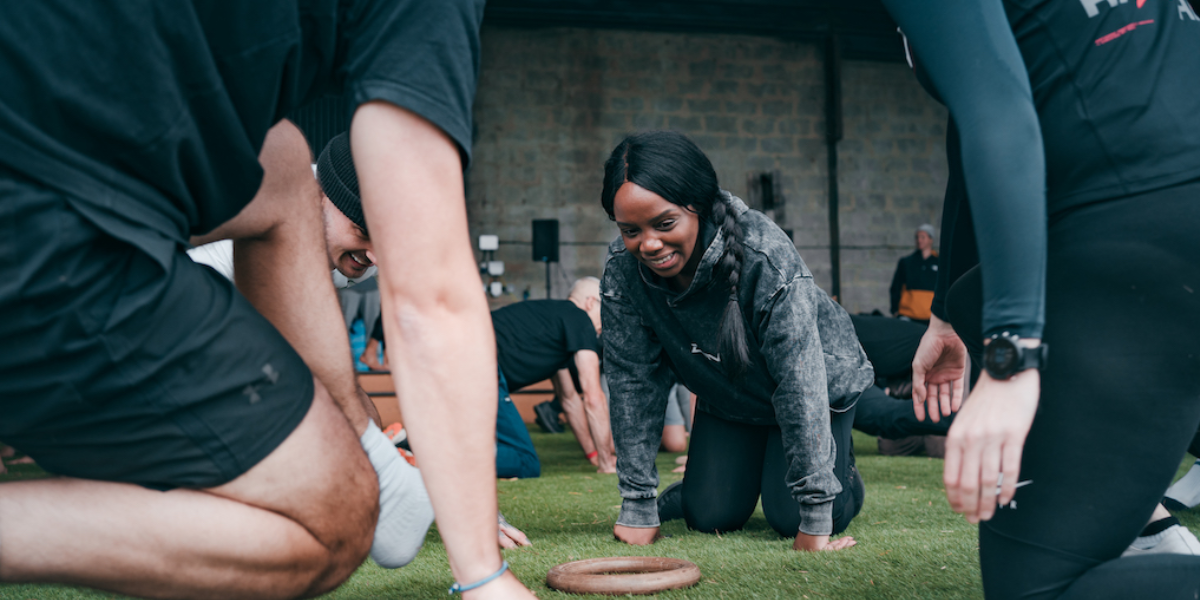
The importance of social connection in humans, one of the most social species, can be seen in almost every aspect of health and well-being.
Humans have a need for social connection and a fundamental desire to connect with others. In the absence of social interaction, social animals suffer significant developmental consequences and experience distress.
Social connection can be defined as “feeling a part of something larger than yourself, feeling close to another person or group, feeling welcomed, and understood”.
Having social support and feeling connected has been associated with improved body mass index, blood sugar control, cancer survival, cardiovascular disease reduction, lower depressive symptoms, and improved well-being overall.
In a world full of distractions, recognising the importance of healthy social connection and human contact is not only essential to our survival but also our ability to thrive and truly become the best versions of ourselves.
The Human Programme is a community of like-minded individuals pursuing a common goal. Our goal is to create a community where knowledge, skills, and friendships are exchanged to foster personal development and meaningful collaboration. Strong bonds between individuals help overcome adversity.
Sleep
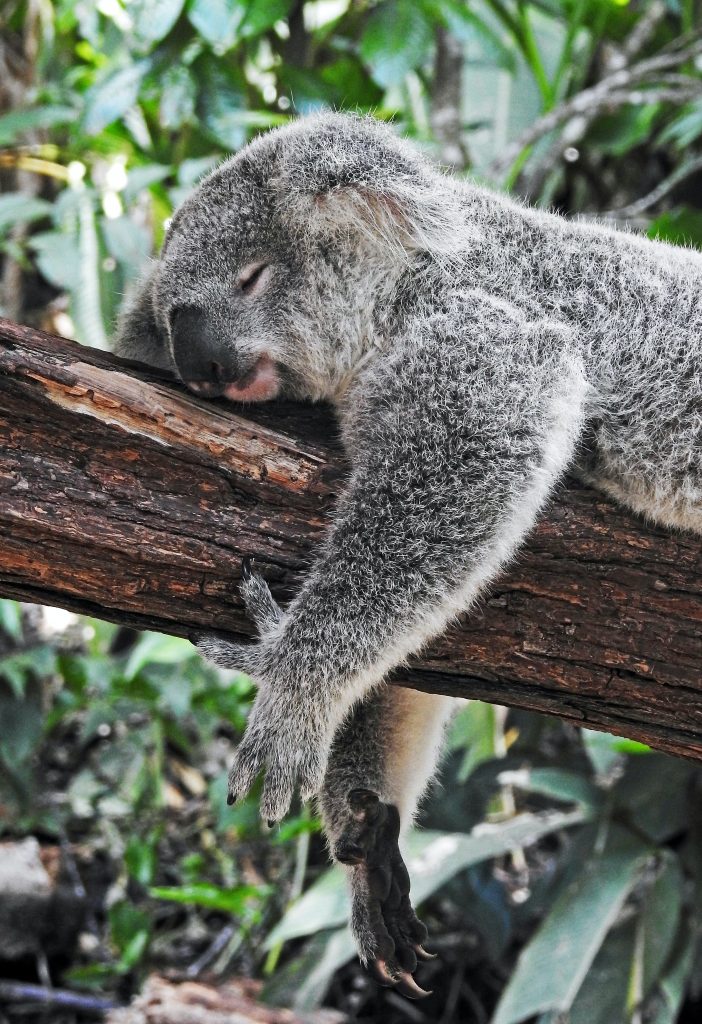
For me growing up, sleep wasn’t a strong pillar, especially before high-pressure sports events.
Sleep quality is largely dependent on how we manage and process stress during the day and looking at the day’s stressors can help to shed some light on this.
We are all familiar with late-night rumination before a big day that is to follow. With the pressures of modern living, increased caffeine consumption, and blue light from electronics, sleep deprivation is common all over the world.
Sleep is essential for the body and mind and restful sleep is one of the foundations of good health. To live a better quality of life, it is important to recharge and rejuvenate the body and mind at night.
The Swiss army knife of all bodily functions is sleep because, without it, mental, emotional, and social health begin to suffer.
Sleep deprivation negatively impacts our performance at work and our wellbeing in our personal lives, with increasing irritability, becoming easily distracted, and experiencing reduced cognition, motivation, and organisation skills.
In order to become superhumans, we must prioritise sleep as an essential ingredient of our overall health and happiness.
The ability to develop a healthy relationship with sleep that encourages recovery and rejuvenation can take time, healthy sleep begins with the habits you develop during the day. These habits will either support or hinder healthy sleep.
Movement & Play
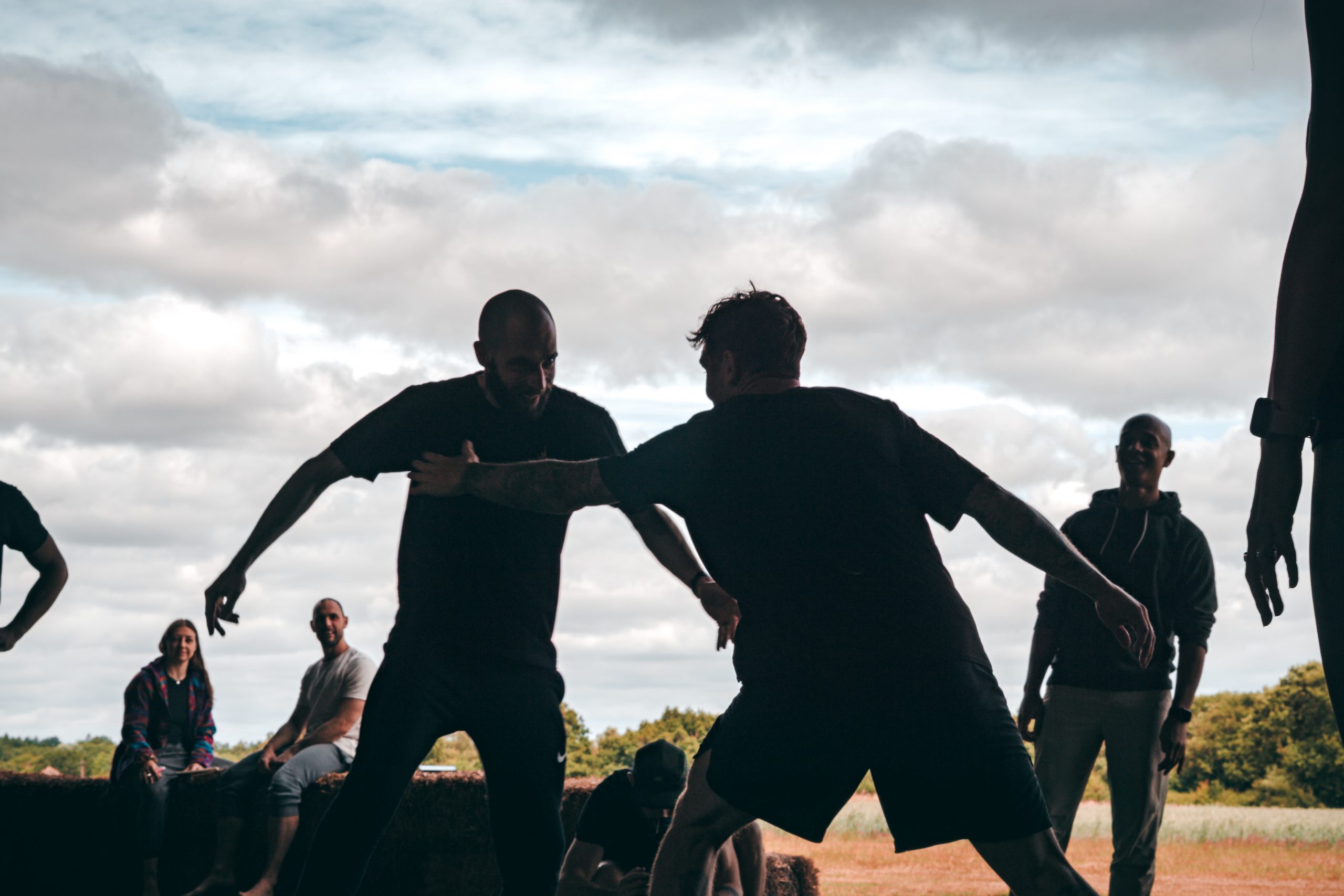
Growing up I was exposed to a multitude of movement practices from dance, parkour, and gymnastics almost by instinct.
With such extensive movement experience coupled with a decade of professional sports, I gained a valuable understanding of an array of movement protocols and strength and conditioning methods.
All of these techniques are beneficial when performed as part of a balanced programme. They are very popular in mainstream health and fitness.
In general, these different fitness components are based on metrics of success, whether it is strength, weight loss, or beating your 5k run time from last week.
The repetitive nature of specialist movements creates stress and loads within the body.
Any activity that is highly demanding, such as weight training or running, requires recovery and rest in order to maximize recovery, performance, and overall well-being.
Through exploring movement capabilities, especially in gymnastics, I often felt unbound and weightless.
This meant that my neural pathways were conducting and firing new sequences and actions that are not often observed in 21st-century living.
The key to increasing your mental flexibility is not performing handstands. It is to change habitual patterns of movement, even if that means walking a different route to work or brushing your teeth with your non-dominant hand from time to time.
Movement variability provides the nervous system with a vast bandwidth of information to interpret from our internal and external environment.
We can tap into our physical potential by moving freely in space, allowing the direction of movement to evolve naturally instead of being constrained by our surroundings.
When we move through different planes and directions of the body at varying speeds, we are constantly adapting to our surroundings.
This ability to change course with intention stimulates neuroplasticity, the brain’s capability to change through experience.
In a world where life is constantly changing, our movement patterns should also adapt to the changing world around us.
This multidirectional approach is known as movement variability. Even highly skilled individuals who consistently achieve the same results will display movement variability within a goal-oriented action or task.
So how do we practice movement variability? Depending on the intensity, any movement can be modified, and the speed can be adjusted after the pattern has been encoded as a new neural circuit in the brain.
Take advantage of activities you enjoy; if walking is your favorite activity, explore different terrains and natural features to stimulate the mind and body.
The human body is designed to perform natural movements such as walking, running, balance, jumping, crawling, and climbing, and manipulative skills such as lifting, carrying, throwing, and catching. Other species do not follow a strict pattern or regime, nor should we. Unpredictably helps maintain the flow of life. Adopting a movement practice is no different.
Have fun and stay playful.
Breathwork
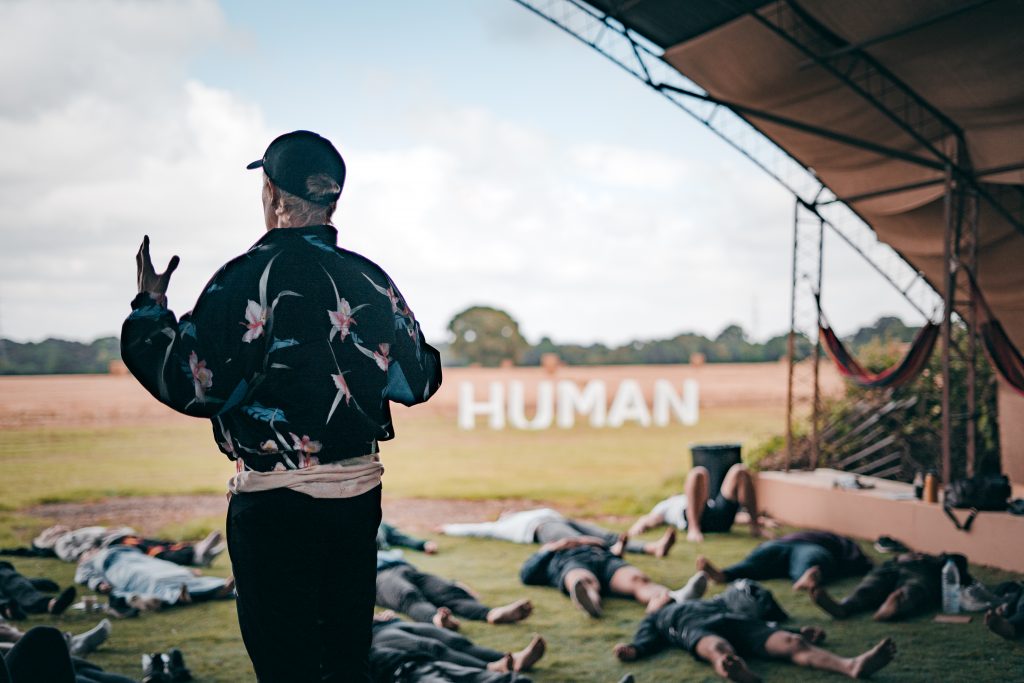
Playing sports for most of my life meant that I was habitually mouth breathing, as the intensity of exercises increases so does the demand for oxygen. Mouth breathing activates the stress response, shifting our nervous system into flight or fight mode.
Breathing can affect both parts of the autonomic nervous system, the sympathetic nervous system (SNS) and the parasympathetic nervous system (PNS).
By practicing nasal breathing and focusing on breathwork, I have gained insight into how my nervous system is expressing itself at that moment in time.
On a subtle level, short, shallow, and fast breathing in the upper chest prepares the nervous system for action. The way we breathe plays a major role in how we react and respond.
Habitually we are a mouth-breathing dominant society. Individuals who habitually breathe through the mouth are more likely to suffer from sleep disorders, fatigue, reduced productivity, and poorer quality of life than nasal breathers.
The act of breathing is an essential part of living. Most people breathe 18–20 times per minute, or over 25,000 times a day. Without thinking, we breathe constantly. The optimal amount to breathe at rest should optimally fall between 6 and 10 times per minute.
Unlike many automatic physical processes, humans can control their breathing patterns. The rate of respiration can be slowed down, sped up, or paused briefly by paying closer attention to our breathing.
The combination of deep breathing and nostril breathing reduces stress and strain on the body by rebalancing the autonomic nervous system towards the parasympathetic nervous system (rest and digest) and improves physical and mental wellbeing.
Researchers are increasingly carrying out studies on how breathing exercises impact the parasympathetic nervous system, as well as their benefits such as stress reduction, better sleep, and increased focus.
You can use the following breathwork technique to down-regulate your nervous system: – 3 seconds inhale, 4 seconds breathe hold, and 5 seconds exhaling, repeating for 3 minutes.
Alongside a daily breath practice, bringing awareness to our breathing patterns is the first step in the ladder. Ask yourself… where is the breath coming from? Is it coming from the upper chest or lower abdomen? Once you have identified it, you can prioritize nasal breathing during the day and night as much as possible to facilitate long-term functional breathing patterns.
Cold Water Immersion
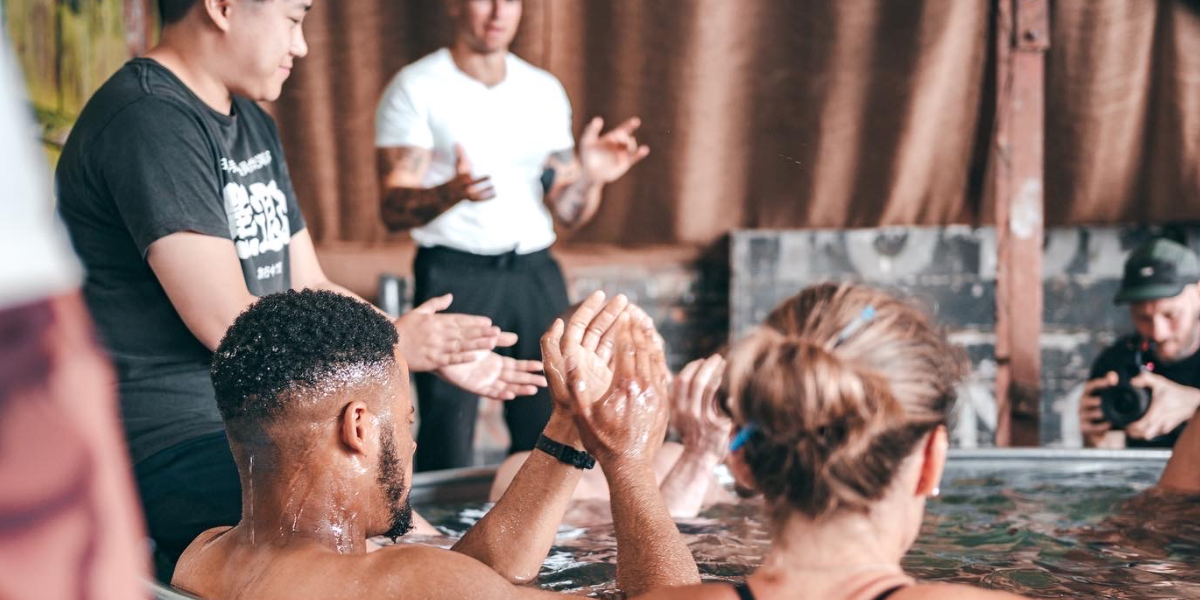
One of the highlights of our wellbeing day experiences is the group cold water immersion experience; it brings people together as they share the courage and strength to overcome the challenge of the cold.
When we are pushed to overcome adversity, we also stimulate the resilience inside of ourselves. This refers to the ability to mentally withstand or adapt to uncertainty, challenges, and adversity.
The truth is humans are hardwired to experience discomfort. It is our natural state. The more willing we can be in discomfort the more resilient we become, the more alive we feel, and the more connected to the planet, to ourselves, and to those around us we become.
Coldwater exposure creates a very alert but calm state of mind. That is optimal for work, social engagement, sports, and performing life at its best.
By incorporating environmental conditioning into your daily routine, you will re-educate the way the body embraces and responds to the natural world. After exposure to cold water, adrenaline and dopamine levels increase rapidly, and these levels continue to rise and continue for hours afterward.
We recommend daily cold showers, 30 seconds cold ~ 30 seconds hot, finishing on the cold. The showerhead should be placed on the back of the neck.
Time in nature
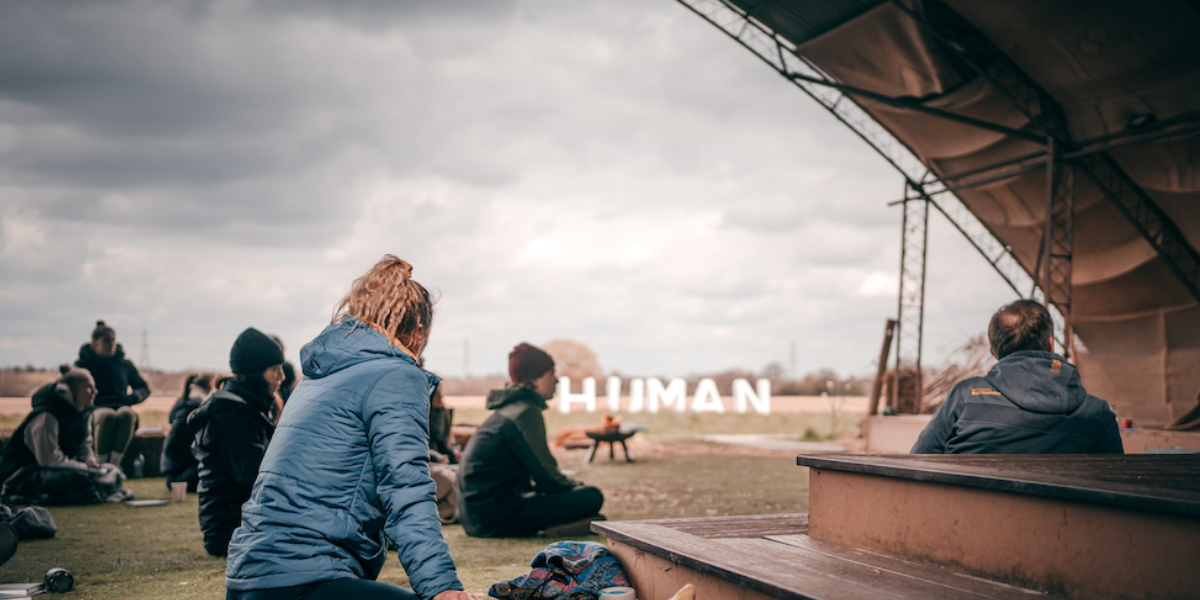
Humans find peace in nature because at our core, we are nature and we have just lost connection to the natural world.
As more than half of the world’s population now lives in cities, we are becoming further deprived of the therapeutic benefits of nature.
Visits to green spaces and exposure to natural environments has been proven to reduce psychological stress in multiple studies.
The natural world contains an assortment of fractals which are geometrical shapes designed only by nature such as lakes, trees, coastlines, and raindrops. Just looking at fractals lowers cortisol levels which is the main stress hormone. It appears we are hard-wired to respond well to nature.
Due to technology’s role in our professional and social interactions, we are now experiencing our landscape through our devices.
Shifting our gaze inward is important for our focus and concentration, however, the rise in technology has narrowed our field of vision, placing a greater strain on our visual system.
When we immerse ourselves in nature, we move our primal gaze into a panoramic stance, we allow for more information to be encoded. Creating a space where new ideas can flourish, relaxation can occur, and we can apply a lateral perspective to life’s situations.
Mind expansive tools
My favorite part of the practice is the unknown. The human code practices are not rigid by nature, which allows for mental flexibility and adaptability to respond to any new challenges that may arise.
The human code well-being practices are mind-expansive tools, that can be accessed at any point throughout the day. A toolbox of healthy living frameworks that is with you at all times.
The practices present an opportunity for you to delve deeper each time exploring new possibilities with an open mind.
A really interesting aspect of the brain is neuroplasticity, whereby new experiences stimulate new connections in the brain. Among the brain’s newest structures, the neocortex is responsible for decision-making and creative functioning. Through conscious attention and a desire for self-improvement, the brain can be rewired.
The practices are self-directed with a clear focus on providing energy, focus, and overall balance to the body and mind through control of the nervous system.
A state of flux experienced during holistic involvement in an activity is known as “Flow”. This state of synchronicity occurs when focus and calmness operate simultaneously during an action. A state of flow is associated with increased cognition, skill development, and often achieving peak performance where time and space seem to disappear.
The human code practices help put the body into a state of flow and presence, one that is not attached to the rigidness of an outcome. The lifestyle practices are frameworks for self-exploration, a personalised portable tool kit of positive health practices to optimise the human condition.
Remember we have our very own in-built neural software to update, the power and potential of neuroplasticity the brain’s ability to change in response to experience.
In my own experience, relaxing and self-care have greatly improved my health. We believe that self-care is the future because it was the ancient wisdom of our past.
I would like to close this article by taking a moment to consider the nature of self-awareness.
Throughout the world of holistic health, I have noticed that spiritual teachers and neuroscientists frequently discuss self-awareness as a crucial component for optimal health and happiness.
Self-awareness is the ability to see yourself clearly and objectively through reflection and introspection. Understanding how you typically respond to stress and adversity is the first step to learning more adaptive strategies.
Self-awareness is a superpower that once unlocked holds the key to many doors that may have appeared dormant in the past.
All the human code practices cultivate awareness and presence, and within a world that demands the future yesterday, taking a moment to pause and slow down could just be the magic bullet we are searching for.
Any comments you may have on this article are more than welcome below.
It is my hope that you have enjoyed this article, and if you feel that the tools and practices may also benefit others around you, please share and pass them on.
Kind regards


